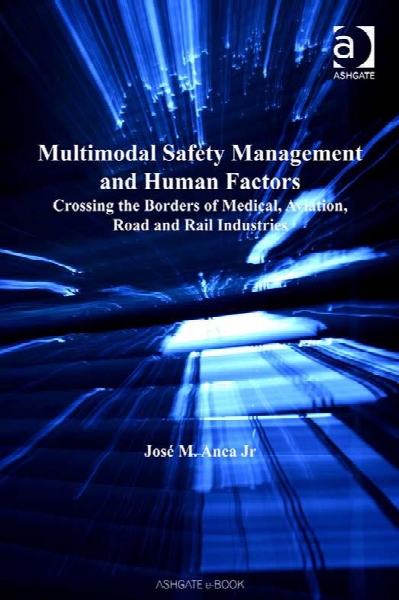Multimodal safety management and human factors : crossing the borders of medical, aviation, road, and rail industries
- نوع فایل : کتاب
- زبان : انگلیسی
- مؤلف : José M Anca
- ناشر : Aldershot, England ; Burlington, VT : Ashgate
- چاپ و سال / کشور: 2007
- شابک / ISBN : 9780754670216
Description
Foreword; Preface; Part 1 Multimodal Characteristics of Safety Management Systems: Can simply correcting the deficiencies found through incident investigation reduce error?, Gerry Gibb; Moving up the SMS down escalator, Bruce Tesmer; Unsafe or safety-significant acts?, David McNair; The Calgary health region: transforming the management of safety, Jack Davis, Jan Davies and Ward Flemons; Governance and safety management, Greg Marshall; Overcoming the short-medium term problems of fleet transition: the expectation and achievement of economic gains, Boyd Falconer and Christopher Reid. Part 2 Safety Management Metrics, Analysis and Reporting Tools: A new reporting system: was the patient harmed or nearly harmed?, Jan M. Davies, Carmella Duchscherer and Glenn McRae; Using aviation insurance data to enhance general aviation safety: phase 1 feasibility study, Michael Lenne, Paul Salmon, Michael Regan, Narelle Haworth and Nicola Fotheringham; Grappling with complexity: analysing an accident with the theory of constraints, Dmitri Zotov, Alan Wright and Lynn Hunt; Drought in safety management - more tools, less theory, Steve Tizzard; Aerial agriculture accidents 200-2005: the human factors and system safety lessons, Geoff Dell; Learning from accidents and incidents, Joanne De Landre, Miles Irving, Iaen Hodges and Bruce Weston; Managing road user error in Australia: where are we now, where are we going and how are we going to get there?, Paul M. Salmon, Michael Regan and Ian Johnston. Part 3 Normal Operations Monitoring and Surveillance Tools: Performance and cognition in dynamic environments: the development of a new tool to assist practitioners, Jemma M. Harris, Mark W. Wiggins, Scott Taylor and Matthew J.W. Thomas; Error management training: identification of core cognitive and interpersonal skill dimensions, Matthew J.W. Thomas and Renee M. Petrilli; Confidential observations of rail safety (CORS): an adaptation of line operations safety audit, Allison McDonald, Brett Garrigan and Lisette Kanse; Human factors in air traffic control: an integrated approach, Christine C. Boag-Hodgson. Part 4 The Modality of Human Factors: Exploring the Management of Human Error: Human factors at railway level crossings: key issues and target road user groups, Jeremy Davey, Nadja Ibrahim and Angela Wallace; Attitudes to safety and teamwork in the operating theatre, and the effects of a program of simulation based team training, Stuart Marshall, Brendan Flanagan, Michele Joseph and Michael Bujor; Human factors and the QFI: developing tools through experience, Boyd Falconer; Advanced driver assistance systems and road safety: the human factor, Michael A. Regan and Kristie L. Young; Recovery of situational awareness using operant conditioning techniques, Peter N. Rosenweg; Effects of flight duty and sleep on the decision-making of commercial airline pilots, Renee M. Petrelli, Matthew J.W. Thomas, Nocole Lamon, Drew Dawson and Gregory D. Roach; Medical team resource management and error prevention training, David G. Newman; Driver distraction: review of the literature and suggestions for countermeasure development, Kristie L. Young and Michael A. Regan; Assessing and managing human factors risks - practical examples in the Australian rail context, Julian Clancy; Anaesthetic registrars' stress mediators in a simulated critical incident, Kate Fraser, Matthew Thomas and Renee Petrilli; Index.
Safety Management Systems (SMS) and Human Factors (HF) disciplines are often regarded as subjective. This is a compendium of SMS and HF approaches from the aviation, road, rail and medical domains. Its chapters focus on applications, tools and strategies in SMS and HF. It is useful for safety scientists, educators, students, and others


